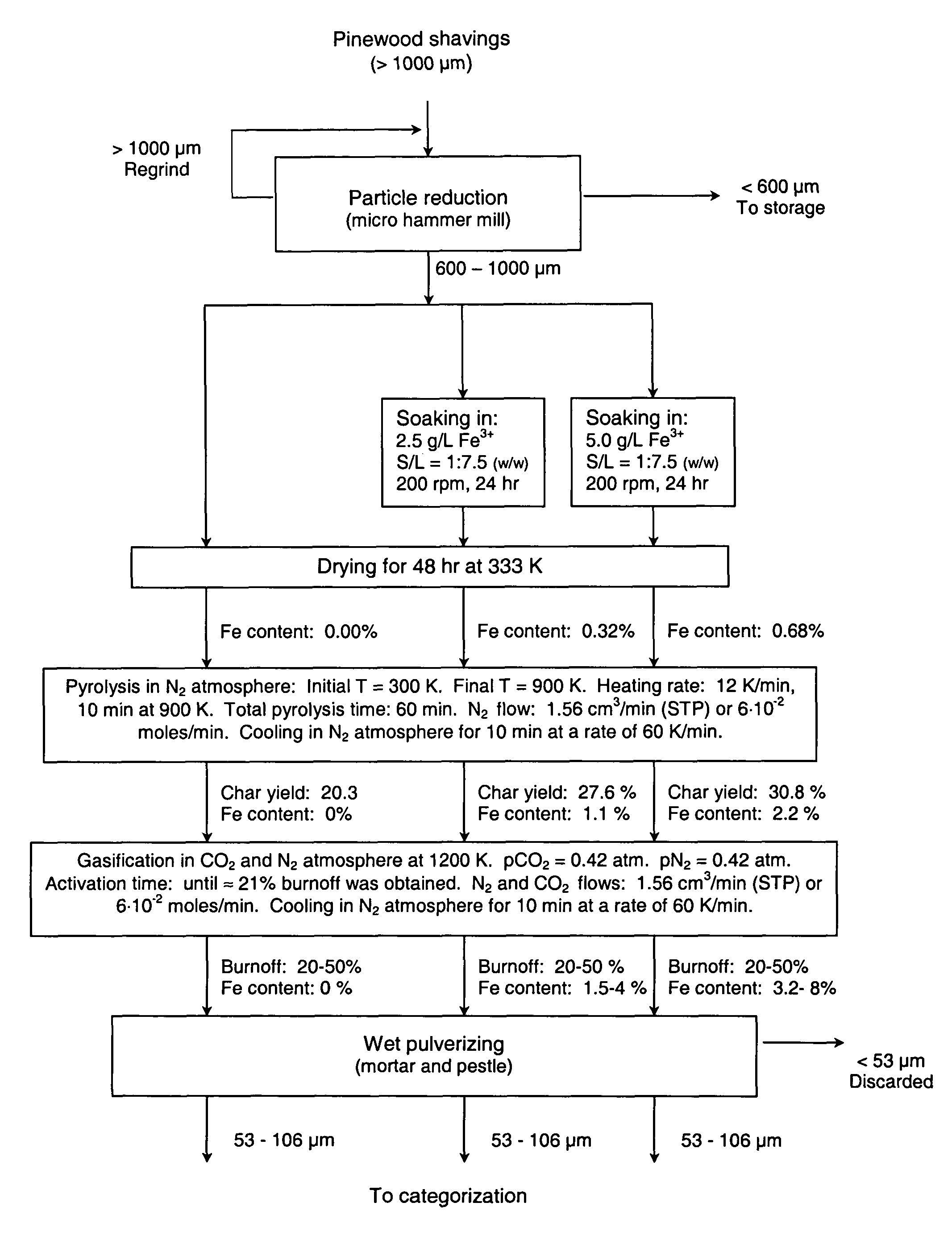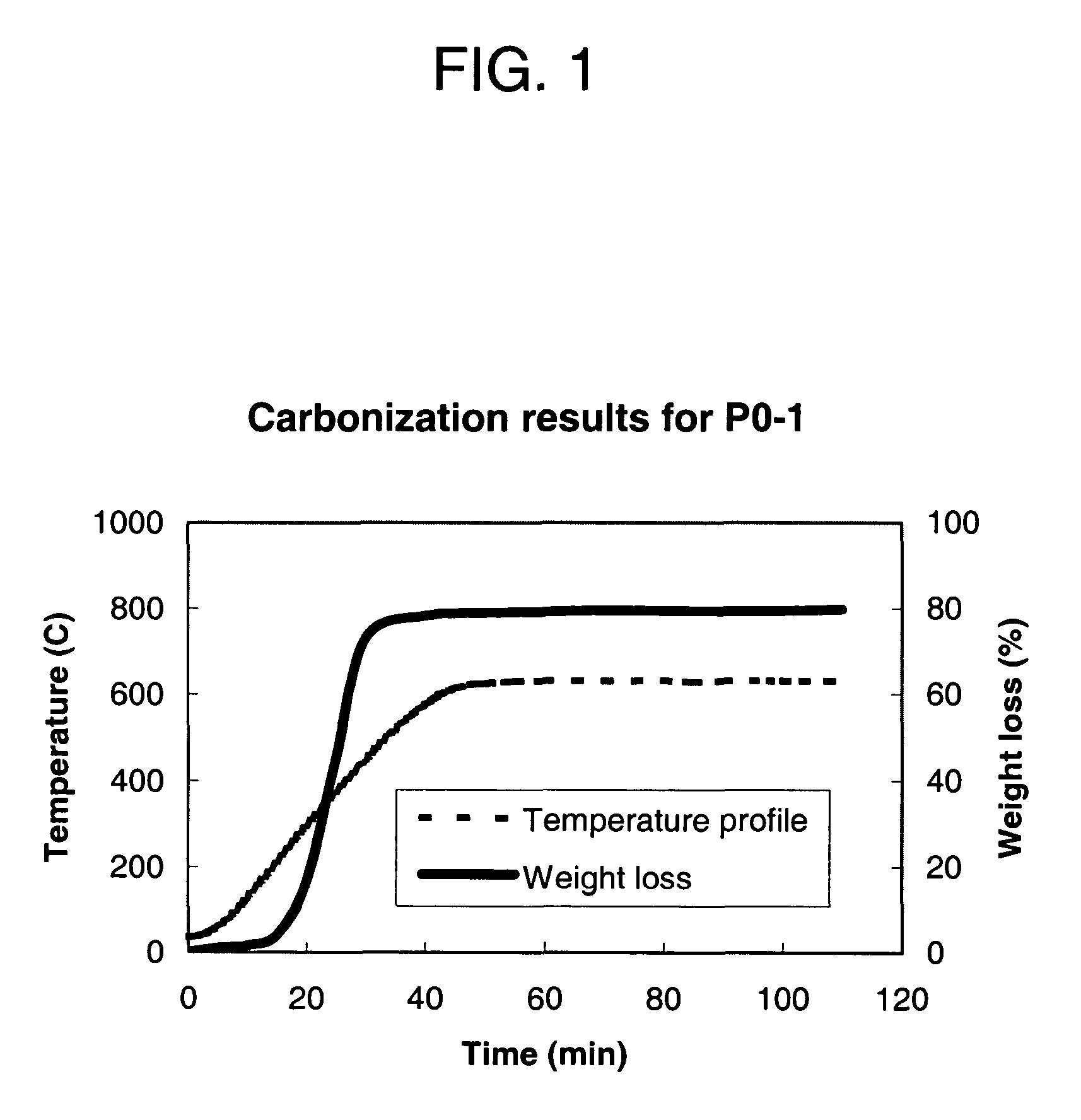Magnetic activated carbon particles for adsorption of solutes from solution
a technology of activated carbon and solution, applied in the direction of magnetic materials, magnetic bodies, non-conductive materials with dispersed conductive materials, etc., can solve the problems of large horsepower, blindness and breakage of screens, and the separation of activated carbon from the slurry phase by screening has significant problems, so as to achieve faster gold adsorption kinetics, high gold loading capacity, and the effect of more flexibility in how the activated
- Summary
- Abstract
- Description
- Claims
- Application Information
AI Technical Summary
Benefits of technology
Problems solved by technology
Method used
Image
Examples
Embodiment Construction
Synthesis of Powdered Magnetic Activated Carbon (MAC)
Raw Materials and Equipment:
[0051]The carbon source for MAC preparation is a softwood with low density (pinewood), and the magnetic precursor for MAC preparation is an iron salt (FeCl3). Wood shavings were produced in a lumber mill using a bark-free pinewood lumber. Subsequently, the shavings were ground in a micro hammer mill to a particle size of 18×30 mesh (600-1000 μm).
[0052]MAC composition and structure were analyzed with a Rigaku DMAX 2200V X-ray diffractometer (XRD). Gold adsorption characteristics were analyzed by solution depletion in a Perkin Elmer 400 inductively coupled plasma emission spectrometer (ICP). Magnetic parameters, such as magnetic susceptibility, coercivity, magnetic remanence and hysteresis behavior, were analyzed in a LakeShore 735 Vibrating Sample Magnetometer.
Impregnation:
[0053]200 g of pinewood, ground to a particle size of 18×30 mesh (600-1000 μm) were immersed in 1.5 L of a solution containing 2.5, 5...
PUM
| Property | Measurement | Unit |
|---|---|---|
| particle size | aaaaa | aaaaa |
| particle size | aaaaa | aaaaa |
| particle size | aaaaa | aaaaa |
Abstract
Description
Claims
Application Information
 Login to View More
Login to View More - R&D
- Intellectual Property
- Life Sciences
- Materials
- Tech Scout
- Unparalleled Data Quality
- Higher Quality Content
- 60% Fewer Hallucinations
Browse by: Latest US Patents, China's latest patents, Technical Efficacy Thesaurus, Application Domain, Technology Topic, Popular Technical Reports.
© 2025 PatSnap. All rights reserved.Legal|Privacy policy|Modern Slavery Act Transparency Statement|Sitemap|About US| Contact US: help@patsnap.com



